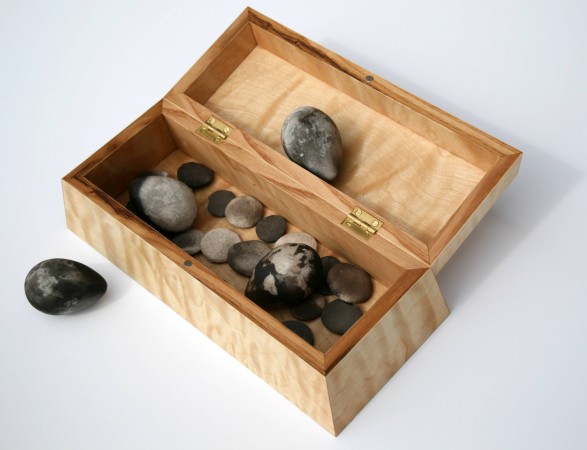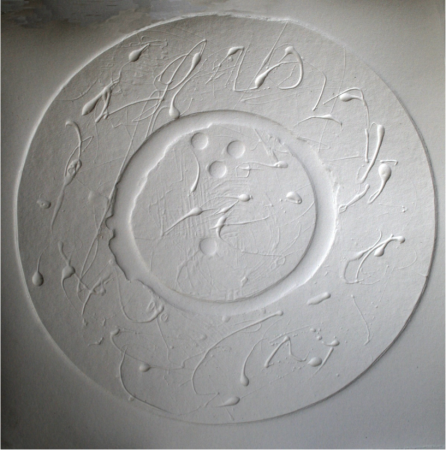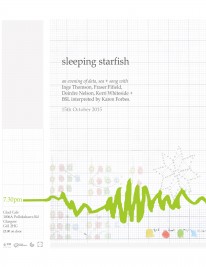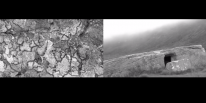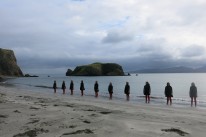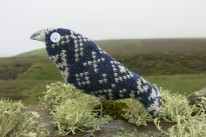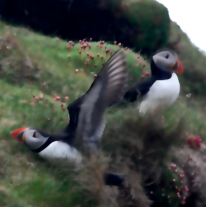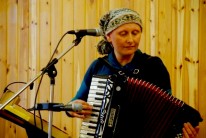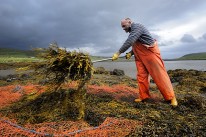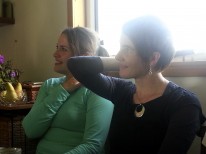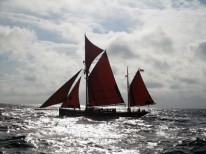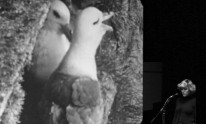Ditty Boxes. John Cumming, Cecil Tait
Artist Diary: John Cumming on Ditty Boxes at the Künstlerhaus, Dortmund
24 February 2013
On the invitation of Imi Maufe and Rona Rangsch, joint curators of this themed exhibition, The Ditty Boxes formed part of “Voyage – sea journeys, island hopping and trans-oceanic concepts “, at the Künstlerhaus, Dormund. I travelled, via Copenhagen, to Dortmund for the hanging and opening of this show. Most of the participating artists were in attendance and a hastily arranged, informal buffet dinner on the pre-opening evening afforded everyone an opportunity to meet. As with the Sea Change project, this enterprise reaffirmed for me the belief in art which is outward looking, risk taking and in the best sense, playful. My few days in the city gave me ample opportunity to experience all the works at leisure. The exhibition is a triumph for the joint curators, and the theme has given a conceptual rigour to the project.
There were no weak links in this exhibition, but three works stood out for me. Sally Waterman [England] shows a video based on a sea journey to the Isle of Wight to attend the funeral of a close friend. Gunnar Jónsson [Iceland] has also contributed a video, this time of a traditional fishing boat carving a constant shimmering circle in the northern Atlantic. A sound sculpture by Jeff Talman [USA] was composed of recordings made deep in the earth, in the ocean on America’s Atlantic shore and in the upper atmosphere. The resulting work, played in a darkened stone chamber was, frankly, visceral in its effect. To spend twenty minutes surrounded by this on a Dortmund evening as a gentle snow fell outside the gallery window, was a mind-alteringly beautiful experience.
8 November 2012
See the review by Orkney writer Morag MacInnes on Ditty Boxes and Cape Farewell at The Pier Arts Centre, Stromness:
http://northings.com/2012/11/09/cape-farewell-at-the-pier/
21 June 2012
The “Ditty Box” project continues to evolve and gradually assimilate into the main body of my work. What pleases me particularly is the extent to which, over the past year, it has led me into collaborations and disciplines I would otherwise have missed. As Cecil constructs the actual boxes in Scalloway, I am busy making contents here in Stromness. We have agreed on the scale, materials and structure of the pieces, but when we introduce the contents to the boxes there will inevitably be a period of readjustment and rearranging. For the sound piece I have been talking to islanders and fishermen who are old enough to have a long-time perspective on changes within the environment and ecology of the isles, while Fionn has trecked the hills, geos and skerries recording the voices of those birds under immediate threat. Among the people I have talked to there is an awareness of changes and a deep sense of loss. Recording these conversations has given me access to the profound knowledge, wit and narratives of some exceptional people.
Over recent months I have also been exploring collagraphy as a medium and developing a graphic equivalent to those “Stone Pillow” forms and textures I have explored previously in stone. The strength of the whole Cape Farewell initiative lies in the extent to which I no longer regard this as a one-off project, but simply an on-going body of work which will continue to develop and grow.
October 2011
There is only so much expansion one can take. We go into our dying with a handful of memories, as an explorer might take a knife, a flint, length of cord and a twist of tea into the wilderness…
Who we are is not in our obituaries but in those final items.
Andrew Greig, At the Loch of the Green Corrie.
Our visit to the Shiants touched me deeply, as it forced me to confront the most obvious and visible evidence of the environmental crisis in the Northern Isles. When I returned home I made contact with an ornithologist friend who is familiar, not just with Orkney and Shetland, but also with the Western Isles. He confirmed my suspicion that the kittiwakes, arctic terns, auks and skuas had experienced yet another disastrous breeding season, and assured me that the arctic skua’s future here can be measured in single figure seasons. The reason for this collapse he attributes directly to increased ocean warmth, which has led to an absence of sand eel; the essential food species.
I have made recordings of the skuas and terns, which I intend to use in some future work, and at present am searching for a musician/ sound artist who might share a similar ambition. As well as the environmental issues, I began to think of the many islanders who were forced into sea journeys either as press-ganged sailors, as whalers, or emigrants and I took the idea of the ditty-box as a symbol of these journeys. I have begun a collaboration with a designer/cabinet maker in Shetland (Cecil Tait) to make a ditty-box as sculpture, with contents for a life journey.
The word “sailor” is so obscured by romantic association that we may become blinded to its true meaning, so let’s talk about “seamen”. For centuries the role of the seaman was one of hardship; of physical drudgery, danger, sickness and estrangement. Seamen were driven to this life by poverty, impressment, exile or fear. Many enlisted voluntarily, but did so in a world where the options were few and harsh.
To think oneself into the mind of a seaman, we must imagine a world in which one’s fate lay entirely at the whim of others. The length of one’s service, the conditions of labour, one’s safety and welfare were in the hands of officers and captains. Those few possessions which gave one identity, the things which said – this is my past, my present, my hope, were kept in a “ditty box”.
Imagine a wooden box so small as to be manageable in a ship with almost no private space. Inside the box are some tokens of home and loved ones, some small tools, a sewing kit, perhaps some scrimshaw; the bare essentials of identity, self-maintenance and a hoped-for future.


